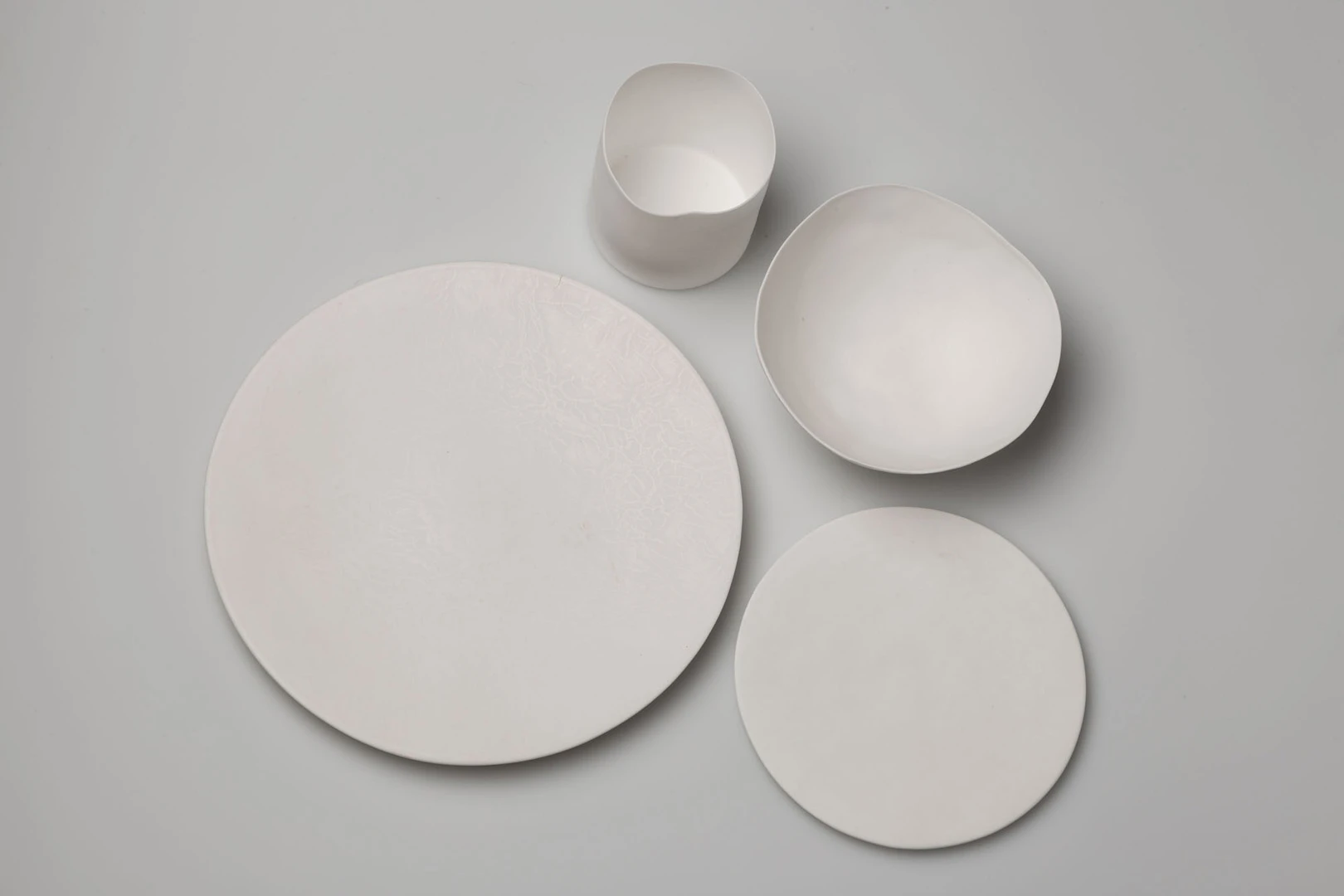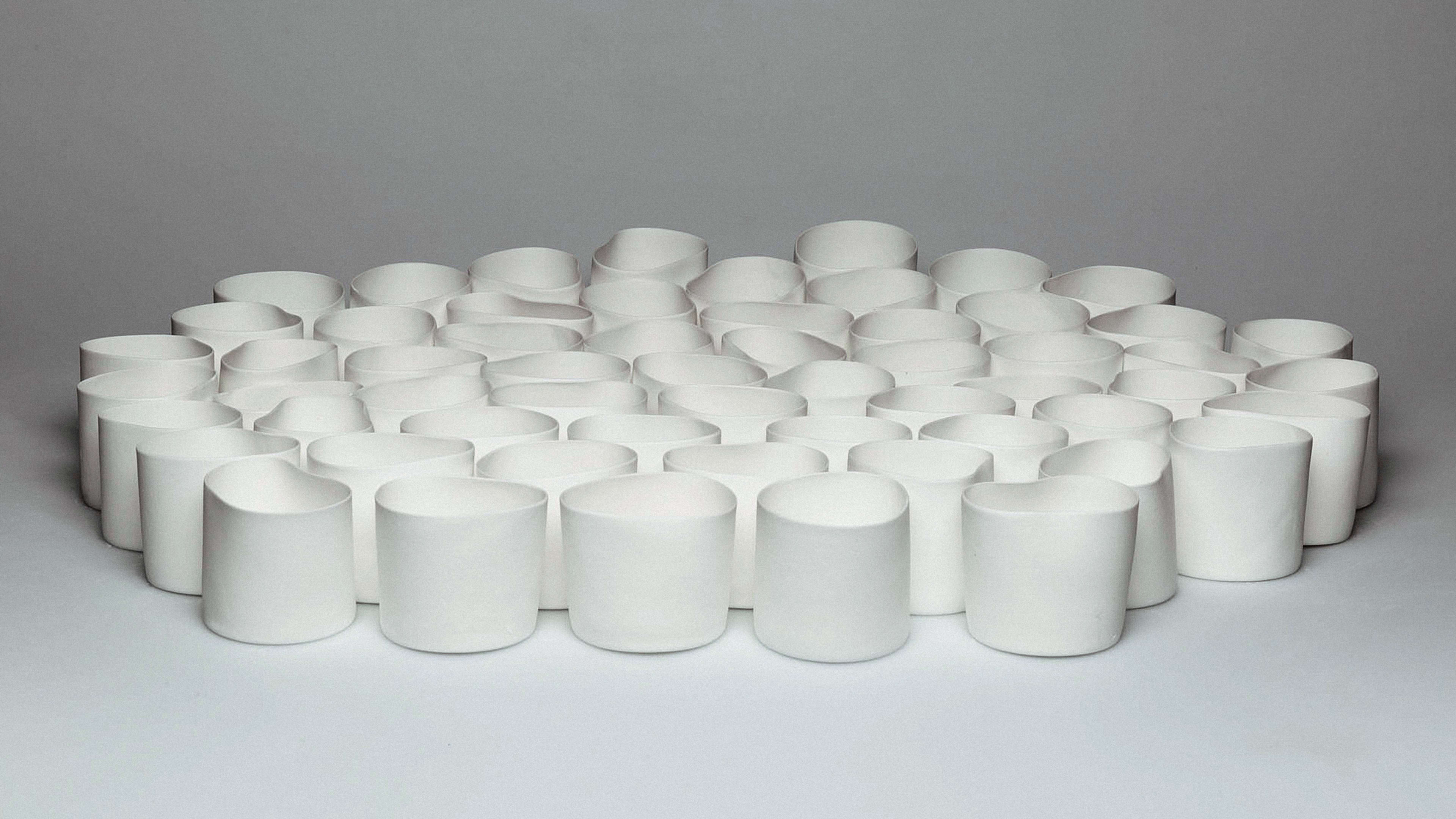When bone china was developed by English potters during the mid-18th century, it was an attempt to build on the long-standing porcelain tradition invented in China. East Asia’s hard-paste porcelain was at once sturdy and delicate, and known for its striking decorative designs. Ceramicists in Britain struggled to mimic this style of craftsmanship, so their porcelain was softer, until they added bone ash—a mix of animal bone and calcium phosphate.
Though bone china began as an interest in durability, ceramicist Gregg Moore has reimagined the art form with sustainability in mind. His “Grass-Fed Bone China” builds on the farm-to-table ethos of many artisanal restaurants today and incorporates animal bone remnants unused by the kitchen at the Blue Hill at Stone Barns in Tarrytown, New York—an institution whose “nose-to-tail” food philosophy centers on exploring creative ways of eating an entire animal once it leaves the farm. Even after Moore’s pottery is created, it remains within the ecosystem of the restaurant: Blue Hill’s table settings feature the artist’s bowls, plates, and cups.

The connection between crockery and cooking is natural—one is designed to hold the other. But Moore’s ceramics are designed to be a meta-commentary on food waste, as they are made from the very cows that produce the restaurant’s dairy and meat. The unglazed, marrow-white objects are primarily made from animal femurs, which are cleaned and then fired. This “calcination” transforms the bones from living matter into the calcium phosphate that potter Josiah Spode in Staffordshire first worked with several centuries ago. Next, the hard paste is mixed with water in a mill, which becomes a liquid slip, and then it’s molded and modeled into the thin-walled, semi-translucent tableware placed at each setting.
Moore’s Grass-Fed Bone China is unlikely to stain and difficult to break. During the firing process, the ceramicist’s symmetrical forms become organically warped and imperfect, much like the once-living animals that bore them. But beyond the aesthetic qualities of Moore’s porcelain dishes, the cows used in Blue Hill’s food (which comes from the Blue Hill farm in Massachusetts) are grass-fed and free-range, which makes the resulting pottery full of material to study, like the environment the animals lived in.
This tableware is the result of an ongoing, five-year collaboration between Moore and Dan Barber, Blue Hill’s head chef and co-owner. Previously, they worked together on plates that were texturized using pecking animals from the restaurant’s farm.
Recognize your brand’s excellence by applying to this year’s Brands That Matter Awards before the early-rate deadline, May 3.





